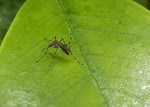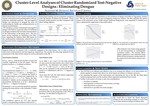Statistical Methods for Vector-Borne Disease Prevention
 Photo by Science in HD on Unsplash
Photo by Science in HD on Unsplash
According to the World Health Organization, mosquitoes transmit diseases that are responsible for millions of human deaths each year. Dengue incidence alone has increased drastically over the last thirty years with the changing climate, as well as increased international travel and trade, putting more than half of the world’s population at risk of this potentially fatal disease. In addition to the burden on human health, the disruption caused by outbreaks of mosquito-borne diseases takes an alarming toll on global and national economies. A recent report in the Brazilian Journal of Health Economics reported that the direct and indirect costs to control dengue and other mosquito-borne diseases reached $650 million USD in 2016.
There is no cure for dengue, making prevention crucial. Historic approaches include behavioral changes, the use of insecticides, and improved sanitation—all of which have been insufficient in mitigating the growing threat of infection. The World Mosquito Program has developed a way to fundamentally change the mosquito itself to decrease transmission risk. The intervention introduces the safe, naturally occurring bacterium Wolbachia into Aedes aegypti mosquitoes, the primary vector for dengue. Upon successful establishment of Wolbachia in Ae. aegypti, the protective Wolbachia is inherited by all offspring via the maternal cell line, making the intervention sustainable with very little upkeep. The presence of Wolbachia suppresses the replication of the dengue virus which decreases the mosquitoes’ ability to transmit the disease to humans. Wolbachia-infected mosquitoes have shown promise with respect to decreasing the risks of dengue, as well as other arboviruses such as Zika, chikungunya, and yellow fever.
To determine whether an intervention reduces the threat of mosquito-borne diseases, researchers often rely on cluster randomized trials (CRTs) since the intervention typically impacts an entire neighborhood rather than a single individual (e.g. city-wide insecticide spraying). The cost of studying clusters of people rather than individuals can be very expensive. CRTs often require enrolling thousands of individuals who are followed for long periods of time with frequent check-ins to precisely determine changes in disease rates. As a result, there are very few CRTs that directly address the concerns of policymakers regarding the prevention of mosquito-borne diseases.
In 2018 a novel trial design called the CR-TND was proposed in order to rigorously evaluate whether Wolbachia effectively decreases the risk of dengue in the real world. The design combines the gold standard CRT with an innovative sampling mechanism known as the Test-Negative Design (TND). Rather than mobilizing a large team to seek out and enroll individuals from the population, the TND enrolls individuals who seek care at local clinics with symptoms that match the clinical case definition of dengue. Individuals who enroll in the trial then have a blood sample tested for the presence of the dengue virus. Those who test-positive become the cases and are compared to those who test-negative, the controls.
Given the novelty of the design, statistical methods for evaluation are not currently available. My dissertation develops and compares methodologies for analyzing CR-TND data as well as lower-cost variants of the CR-TND. Each methodology is evaluated with respect to three primary estimation goals: 1) the accurate estimation of the size of the intervention effect, 2) the estimation of the precision of the estimated size of the intervention effect, and 3) a reliable test to determine whether the intervention has a significant impact on decreasing the rate of dengue infection. Meeting each of these goals is essential for understanding the effectiveness of an intervention and the methodologies described have a wide range of applications beyond the motivating example.





